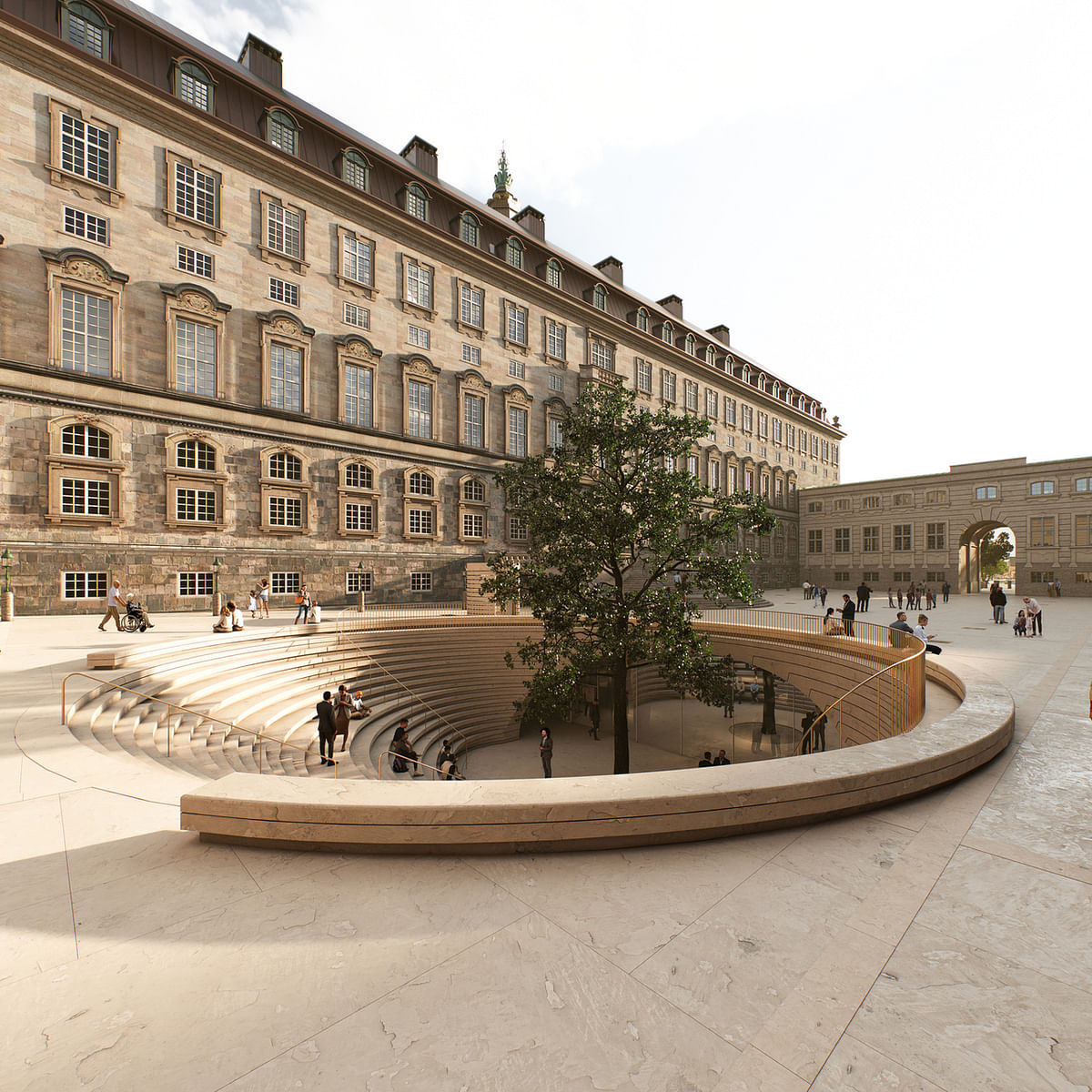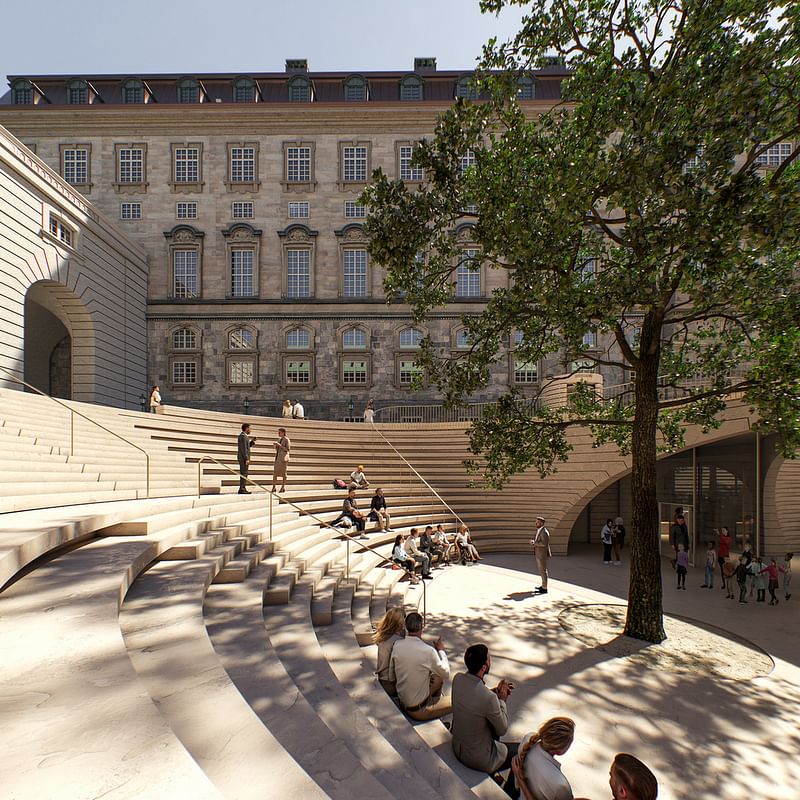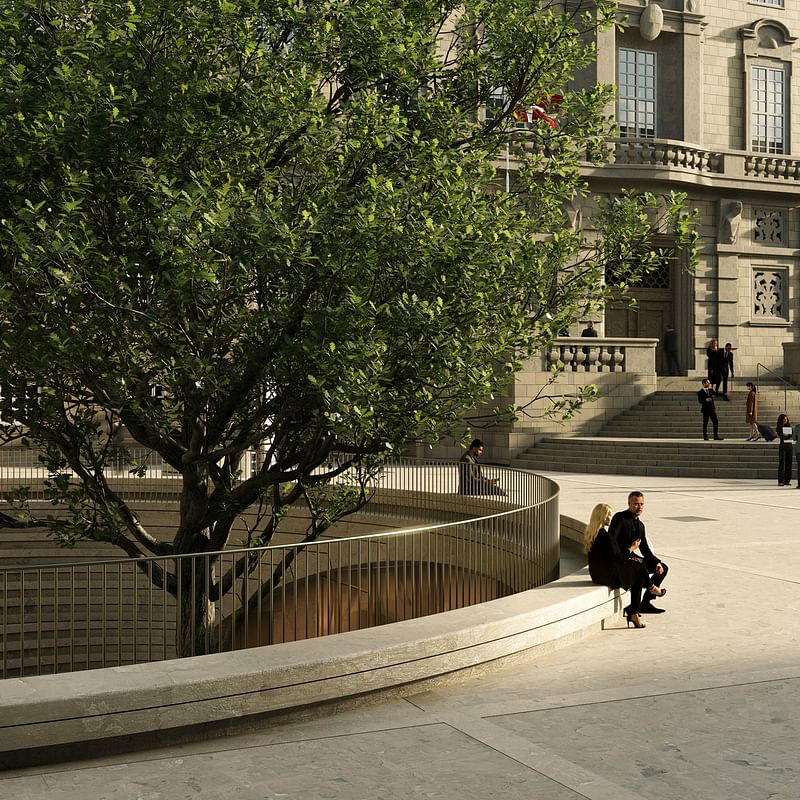Team Cobe wins competition for the future Danish parliament in Copenhagen
By Josh Niland|
Tuesday, Mar 19, 2024

Related
Cobe, in collaboration with architects Arcgency and Drachmann and engineers Sweco, has been selected as the winning team in the competition for the modernization of the Danish Parliament in Copenhagen.
The design aims to make the country’s center of government more accessible and open to citizens while adding education spaces, an area for exhibitions, a restaurant, and other user-centric amenities to existing facilities and the public realm between the Danish National Archives and Christiansborg Palace.

Cobe founder Dan Stubbergaard said: "As architects, there is no more inspiring task than being able to work with the physical framework of our democracy. There is a huge and important cultural heritage to protect. At the same time, we intend to renew Parliament. The Danish Parliament is the democratic bastion of Denmark. Through this project, we aim to show the uniqueness of Danish democracy, making it open and accessible to all but still efficient, safe and secure, and invite us all to go deeper inside its buildings, to the heart of parliamentary work, creating a democracy, meeting place for everyone."

The design’s inspiration is taken from ancient Nordic 'Tingsted' debate forums. A small sunken public amphitheater will be created to serve as the new entrance to the government buildings, framed by an imposing tree that's meant to symbolize the roots of democracy.

An entry sequence framed by historically referenced arches leads users into a new visitors center, which showcases a special exhibition on Denmark's 175-year history as a democratic nation. Further renovations will be made to turn the former National Archives into new offices with added committee rooms for member of parliament and their visiting constituents to view the "engine room" of democracy.

In terms of the materials used for the project, the team chose a pallet that was both "resource-conscious" and driven by the architectural tradition of parliament, which was built using field stones taken from Danish church parishes. As such, existing materials from the Archive Building's floor decking, shelving, and surplus bricks will be repurposed throughout as wall panels, acoustic elements for the ceiling, and aggregates for the new cast floors.

Cobe says: "We want to carry on this tradition and shape a resource-conscious project that uses local solutions, craft traditions, and materials. At the same time, the project should support the green transition and innovation within the Danish construction industry."
The project will be executed at between 10,000 and 12,000 square meters, or about 110,000 square feet. A construction timeline and budget for the work have not been released yet.

RELATED NEWS Cobe and Yellon win Stockholm's historic gasworks residential tower competition

RELATED NEWS Score! COBE unveils new photos of “Halftime”, Adidas' new HQ in Germany


Share
0 Comments
Comment as :